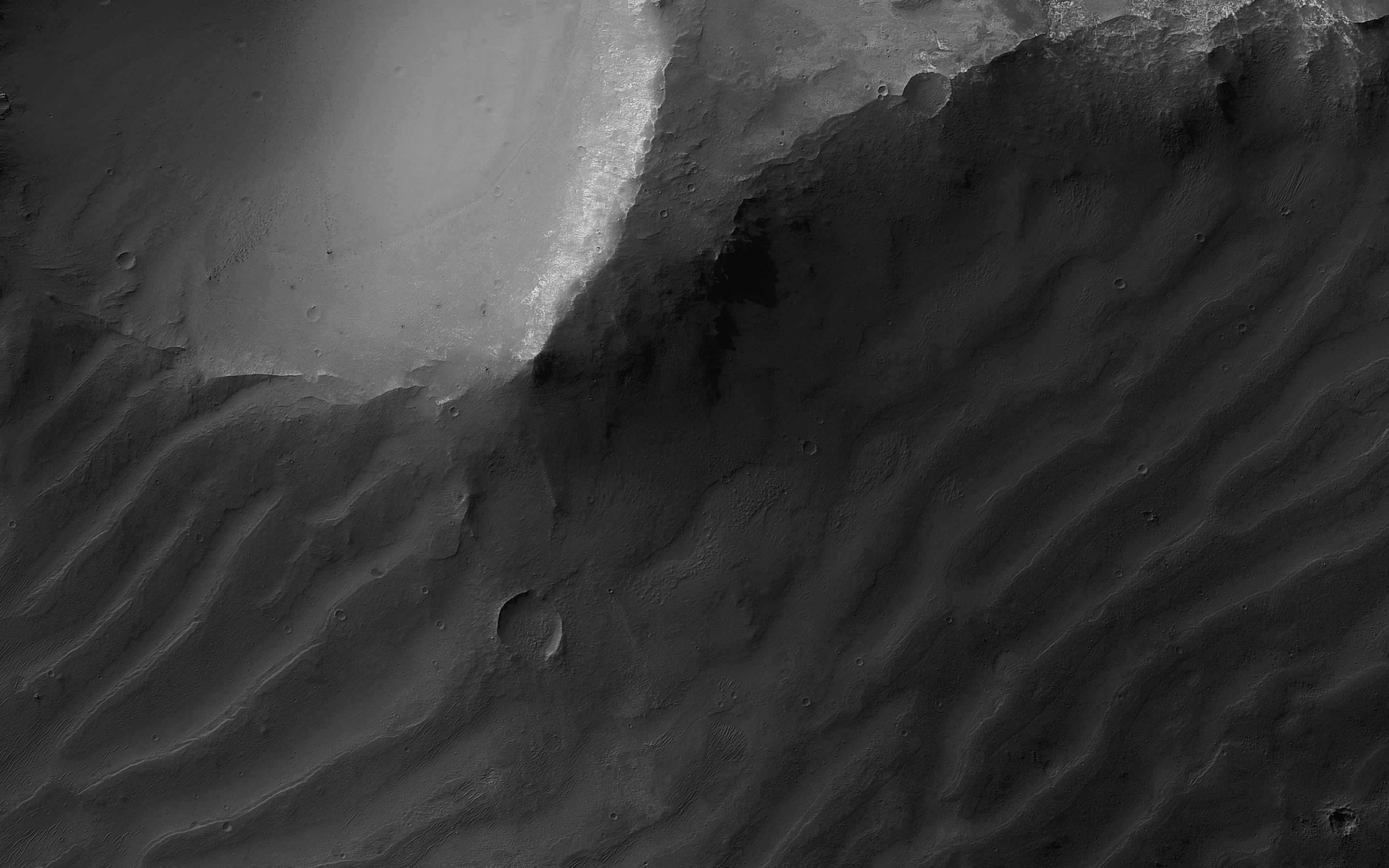
|
Enigmatic Canyon Dunes
- Click the image above for a larger view
- Full-Res JPEG (2880 x 1800) (691.0 kB)
- Full-Res TIFF (2880 x 1800) (4.8 MB)
Caption:

Map Projected Browse Image
Click on image for larger version
This image shows a cross-section of ancient canyon systems in east Coprates Chasma, and displays several orders and generations of wind-driven dunes and ripples, also called bedforms. Some areas display more modern bedforms, often termed mega-ripples , which have likely been active over long timescales and have migrated in the recent past.
Other areas along the canyon wall have larger bedforms that show a very different appearance. Although they have a spacing that would make them similar to typical Martian sand dunes, many display superposed craters , indicating they have not migrated for a very long time, possibly hundreds of thousands of years.
The map is projected here at a scale of 50 centimeters (19.7 inches) per pixel. (The original image scale is 53.0 centimeters [20.9 inches] per pixel [with 2 x 2 binning]; objects on the order of 159 centimeters [62.6 inches] across are resolved.) North is up.
This is a stereo pair with PSP_009143_1645 .
Background Info:
The University of Arizona, in Tucson, operates HiRISE, which was built by Ball Aerospace & Technologies Corp., in Boulder, Colorado. NASA's Jet Propulsion Laboratory, a division of Caltech in Pasadena, California, manages the Mars Reconnaissance Orbiter Project for NASA's Science Mission Directorate, Washington.
Cataloging Keywords:
| Name | Value | Additional Values |
|---|---|---|
| Target | Mars | |
| System | ||
| Target Type | Planet | |
| Mission | Mars Reconnaissance Orbiter (MRO) | |
| Instrument Host | Mars Reconnaissance Orbiter | |
| Host Type | Orbiter | |
| Instrument | High Resolution Imaging Science Experiment (HiRISE) | |
| Detector | ||
| Extra Keywords | Color, Crater, Dune, Map | |
| Acquisition Date | ||
| Release Date | 2019-10-21 | |
| Date in Caption | ||
| Image Credit | NASA/JPL-Caltech/University of Arizona | |
| Source | photojournal.jpl.nasa.gov/catalog/PIA23530 | |
| Identifier | PIA23530 | |
